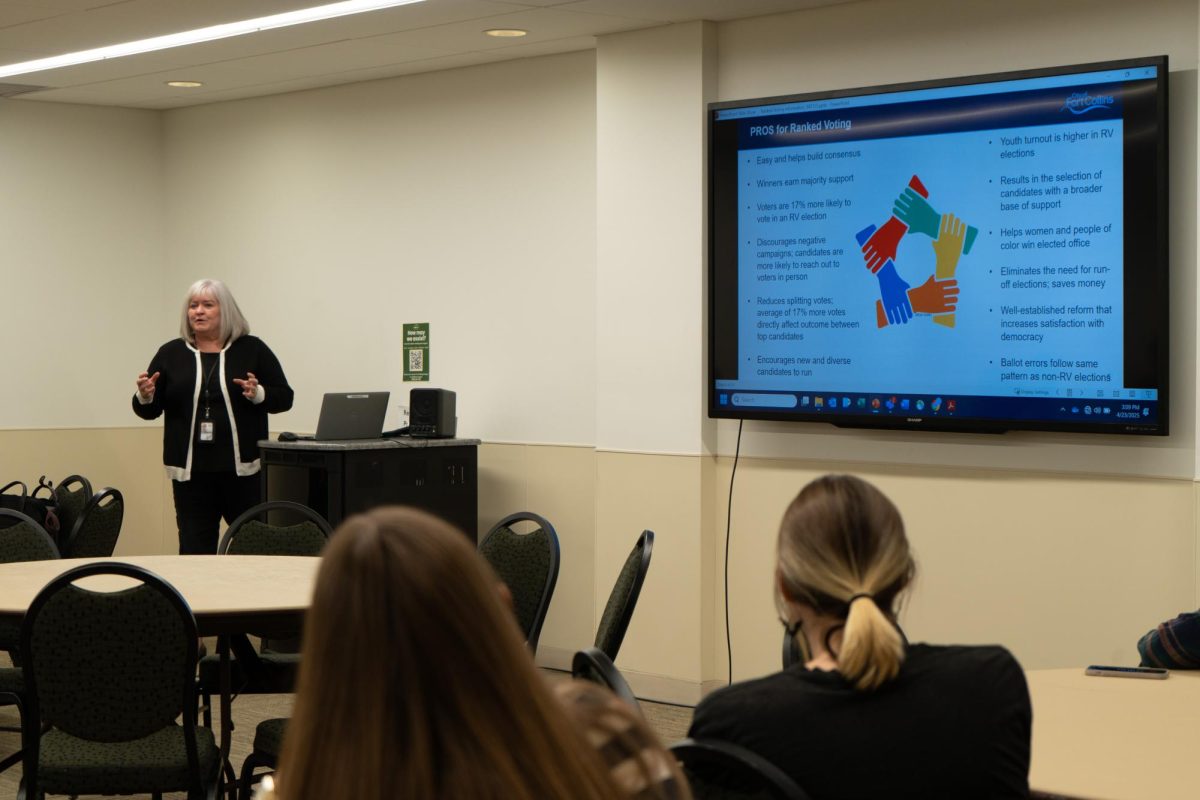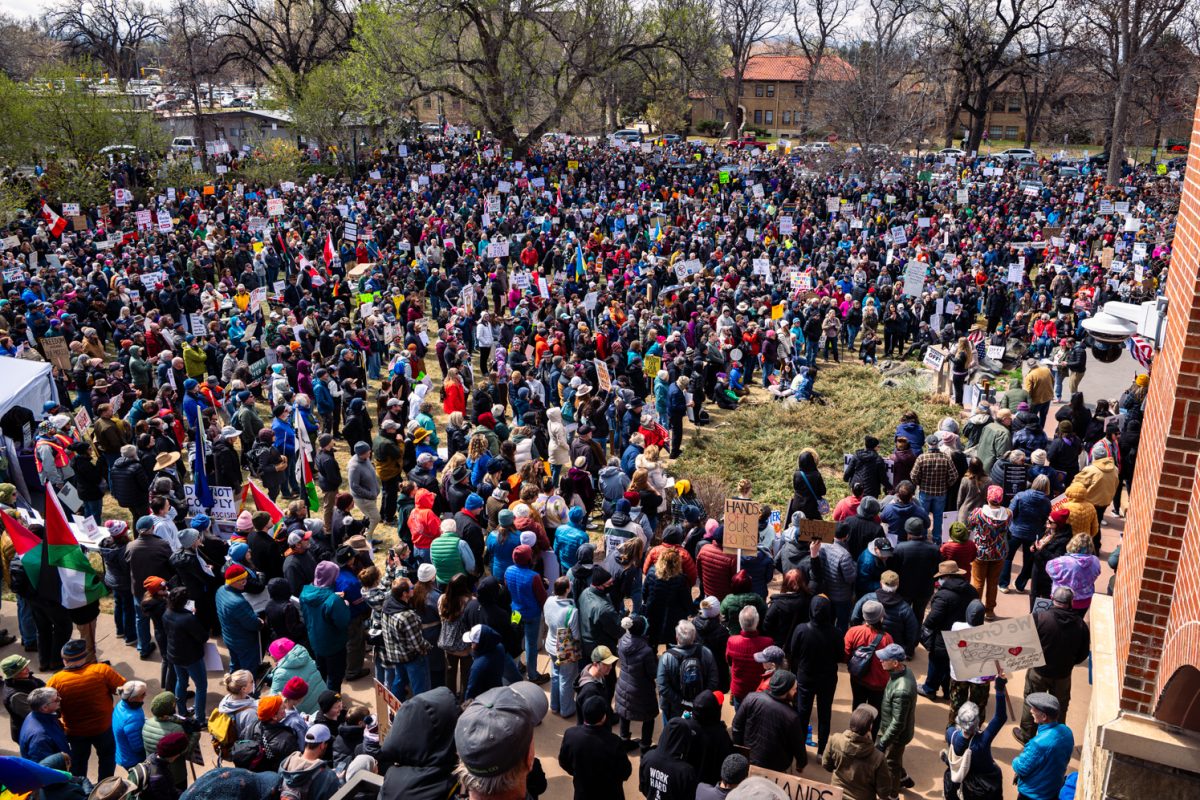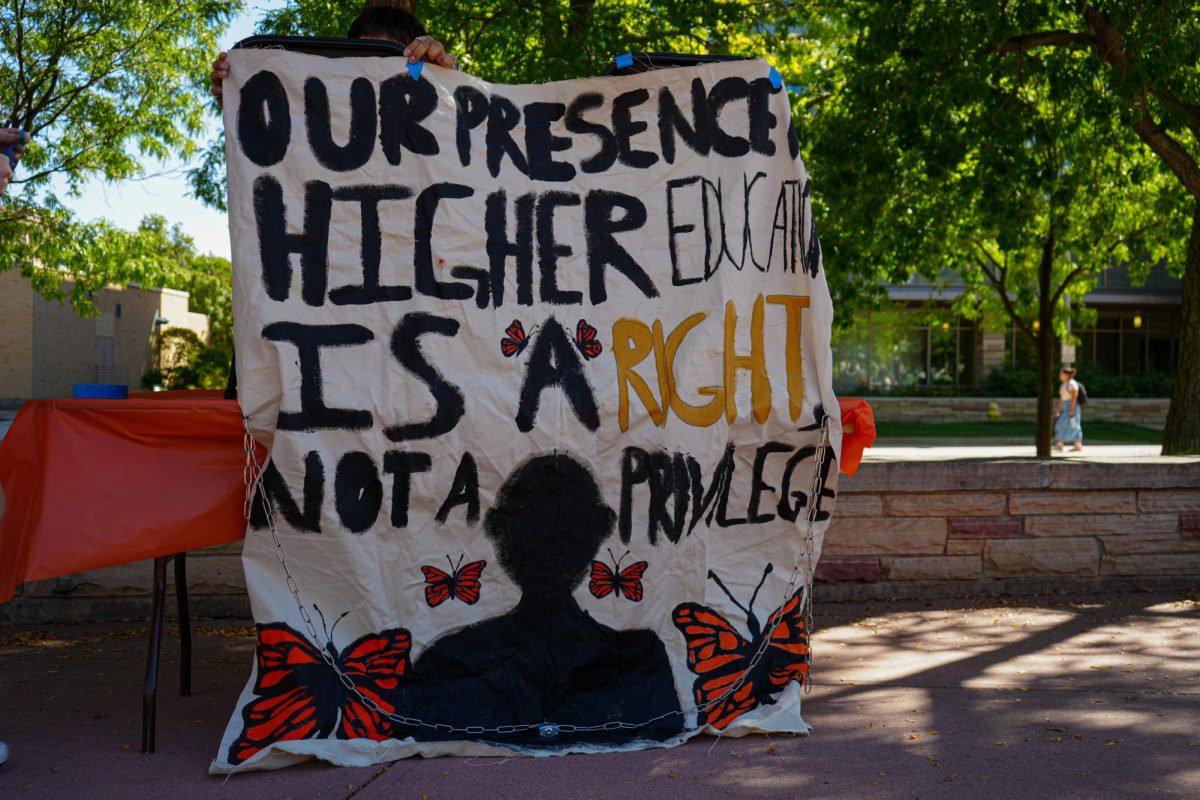
Editors Note: The Collegian sent two editors to Las Vegas, Nevada to cover the Republican and Democratic caucuses before the campaigns come to Colorado on March 1. This piece is the final part of a series of articles produced during the five days they spent traveling in and around Sin City. Follow the Collegian for continuous coverage of the 2016 election.
—
LAS VEGAS — We were somewhere above Zion National Park on the edge of Nevada when the race for the west began to take hold.
By the time all caucus results were reported, Donald Trump and Hillary Clinton were victorious over their competitors for the Republican and Democratic nominations in Nevada, by a long shot and by a small margin, respectively.
Nevada and Colorado will be the first two western states to have reported their caucus results by March 2, with Colorado voting along with ten other states on Tuesday March 1.
But what does this mean for Colorado?
First, let’s recap what happened two states to the west.
The American West
With the exceptions of John Kasich and Jeb Bush, who dropped out of the race following his decidedly campaign-ending fourth-place finish in South Carolina, every candidate fought to claim their stake in a state where the federal government owns 83 percent of the land.
Live updates from caucus locations all across the state showed that Clinton began the day of the caucus, Feb. 20, polling behind Bernie Sanders. Until about 1 p.m. that same day, the two candidates were pretty much tied in the state, until Clinton began to edge out a win. In the end, she had a six-point lead over the Vermont senator.
Sanders called the loss a victory for his grassroots campaign and said his finish in Nevada showed he could “win anywhere.”
On the Republican side of things, Trump was declared the winner almost immediately after caucuses closed by most major news networks. Runner-ups Ted Cruz and Marco Rubio changed positions from second to third and back again throughout the night, with final results reported the morning of Feb. 23 placing Rubio three points ahead of his closest competitor.
Ted Cruz congratulated Trump for his victory, but said he looked forward to seeing the results in his home state of Texas.
No surprises … right?

Trump and Clinton are regarded by many as the leading candidates for each race, with some political analysts questioning whether it is even possible to slow Trump at this point and with Clinton winning two out of three Democratic caucuses so far in the race.
Cruz came in third for the third time, Kasich and Carson didn’t enter the top three, Sanders continues to believe in the power of his supporters and of his message while Clinton edges out wins in states he should take.
In other words, no surprises … until you look at the demographics of GOP voters.
Nevada has the largest number of Latino voters of any state that has voted so far — they make up 27 percent of the population. Even Colorado, which has a large Latino population, only stands at 21 percent.
Against all predictions, Trump won the Latino vote. He also won the white, the youth, the middle-aged, the elderly, the educated, the uneducated, the conservative, the moderate, the Christian and the non-Christian vote, according to CNN entrance polls.
Most importantly, he won the angry vote. 48 percent of those polled at caucus locations said they were “angry” with the federal government. Before Nevada, many thought Trump couldn’t break 35 percent of the vote.
With Trump victorious in nearly every demographic, Nevada political commentator Jon Ralston said “there are no ceilings in this election.”
But what does this mean for Colorado?
The first thing to mention when it comes to the GOP in Colorado is that the party cancelled its presidential preference polls in the state, leaving only the Democratic Party to hold statewide caucuses. Republican caucus-goers will instead vote directly for delegates to go to the Republican National Convention, who lean toward certain candidates.
Claudine Kappius, a Republican Party Chairwoman for Sedgwick County, said the poll had no value in an interview with the Colorado Independent. CO Republican Party Chairman Steve House called the caucuses “media events.”
So while campaign schedules are not yet known, Sanders and Clinton will likely be the only candidates who make appearances in Colorado.
Nevada’s relatively high minority population is also reflected in Colorado, although the Centennial State does have a higher number of those who identify as white.
Going into the Democratic caucuses, Clinton was believed to have gained a majority support from the Latino population. Coming out of them, finding out who maintained more influence with Latino voters becomes a bit more murky.
Sanders’ campaign spokesman Michael Briggs claimed the Vermont senator won Latinos by eight points, 53 to Clinton’s 45 percent, pointing to entrance polls provided by CNN. However, the Clinton campaign claims that because the entrance poll had an error margin of eight percent, she could have beaten Sanders with the group.
When it comes to who Democrats seem to favor in general, Sanders takes the clear lead. According to a poll conducted from Feb. 17-18 among likely Democratic caucus voters in Colorado, Sanders led the former secretary of state 49 to 44 points.
Nine percent of those polled said they had not decided.
Super Tuesday, March 1
Colorado Democrats will vote with 10 other states on March 1, the results of which may indicate which candidates from each party will have an easier path to the nomination. Due to either a lack of polling or a conflict in preference between party members in the state, there is no clear leader on the Democratic side.
If Nevada is any indication of how the Colorado Democratic caucuses may play out, either Sanders or Clinton will win by only a hair, and a very thin one at that.
The Colorado caucus will show whether Sanders’ message and grassroots campaign can sustain itself all the way to the general election, or whether Clinton’s ability to attract undecided voters looking for a candidate who can “get things done” will ultimately best the senator.
Collegian Assistant News Editor Erik Petrovich can be reached at news@collegian.com or via Twitter @EAPetrovich.










